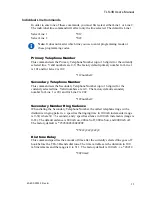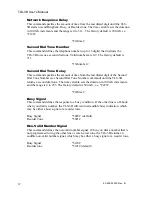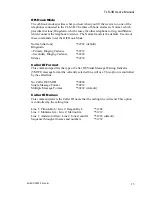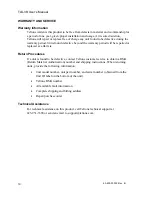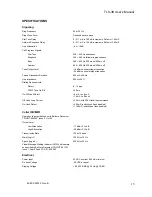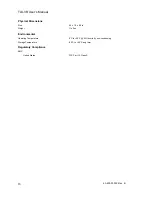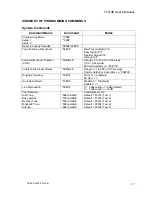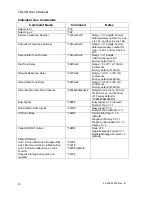
TLS-3B User’s Manual
40-400-00032, Rev. B
4
Installing a Call Identifier
To use the TLS-3B’s Caller ID feature, you must use an external call identifier or a
telephone set with built-in Caller ID. In most cases, the call identifier goes between
the TLS-3B and the telephone set. You should follow the instructions supplied with
the call identifier. If the call identifier instructions tell you to plug a cable into a wall
outlet, connect it to the TLS-3B.
HOW TO OPERATE THE TLS-3B
The TLS-3B has one talk path between the two lines. When a telephone connected to
either line goes off-hook while the other is still on-hook, the off-hook telephone
receives dial tone. If a telephone is already off-hook, the second telephone will not
receive dial tone (silence).
The TLS-3B stores two separate configurations, called Setup 1 and Setup 2. This
enables two different users to store settings they use often (for example, the sales staff
might use the TLS-3B in one setup, and engineering the other). When the unit is in
Setup 1, the Power LED blinks once; when it is in Setup 2, it blinks twice. For
information about programming different setups, see “Programming the TLS-3B” on
page 8.
Each line has two programmable telephone numbers. For programming information,
see “Programming the TLS-3B” on page 8. To call the other telephone, lift the
handset and dial one of the numbers assigned to the telephone you want to call. The
TLS-3B recognizes both rotary (pulse) and tone dialing.
The default telephone numbers for the two lines are:
Line 1 = 101 and 201
Line 2 = 102 and 202
Calling Line 2
To call Line 2 (Primary):
•
Dial 102.
One long ring (2 seconds on, 4 seconds off), repeated until answer.
To call Line 2 (Secondary):
•
Dial 202.
Two short rings (programmable): 800 mS on, 400 mS off, 800 mS on, 4 seconds off
Содержание TLS-3B
Страница 1: ...Telephone Line Simulator TLS 3B User s Manual 40 400 00032 Rev B ...
Страница 6: ......

















